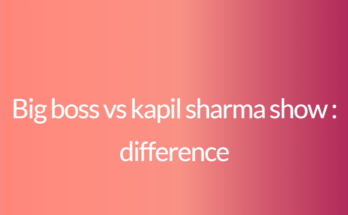Introduction:
When it comes to working with machine learning models, two common terms that often come up are “fine-tuning” and “pretrained”. These terms are related to the process of using preexisting models to achieve better performance, but they have some key differences. In this article, I will explain the difference between fine-tuning and pretrained models, and when to use each approach.
Difference between Fine-tuning and Pretrained Models:
Fine-tuning:
Fine-tuning refers to the process of taking a preexisting model and training it on a new, specific task or dataset. In this approach, the initial model is usually trained on a large dataset, often a general dataset such as ImageNet, that contains a wide variety of images. The idea is to leverage the knowledge embedded in the initial model by using it as a starting point and adjusting it for the specific task at hand.
To fine-tune a model, you typically keep the initial layers of the model frozen, which means that they will not be changed during the training process. These layers are responsible for learning general features from the initial dataset. Then, you replace or add new layers on top of the frozen layers, which will be trained on the new dataset.
The advantage of fine-tuning is that it allows you to adapt a preexisting model to a specific task, even if you don’t have a large dataset for training. By starting with a pretrained model, you can save time and computational resources compared to training a model from scratch.
Pretrained Models:
On the other hand, a pretrained model refers to a model that has been trained on a large dataset for a specific task. These models are trained using powerful hardware and large datasets to learn general features and patterns from the data. They are designed to extract high-level features from the input data, which can then be used for various tasks.
A pretrained model is usually trained on a general dataset such as ImageNet, which contains a vast number of labeled images. By training on this dataset, the model learns to recognize common objects, shapes, and patterns. These pretrained models are often available as open-source projects or provided by machine learning libraries such as TensorFlow or PyTorch.
Using a pretrained model allows you to take advantage of the knowledge and patterns learned on a large dataset without having to train a model from scratch. This can be particularly useful when you have limited computational resources or a small dataset.
Conclusion:
In summary, the main difference between fine-tuning and pretrained models lies in the process and purpose. Fine-tuning involves taking a preexisting model and adjusting it for a specific task by training additional layers on top of the frozen layers. This approach is useful when you have a specific dataset and want to adapt a model to it.
Pretrained models, on the other hand, are models that have been pre-trained on a large dataset for a specific task. These models are trained using powerful hardware and large datasets to learn general features and patterns. They are beneficial when you have limited computational resources or a small dataset.
Both fine-tuning and pretrained models are valuable techniques in machine learning, and which one to choose depends on the specific requirements and constraints of the task at hand. It’s essential to weigh the benefits and limitations of each approach and decide which one is most suitable for your particular scenario.
HTML Table showcasing the difference between Fine-tuning and Pretrained Models:
| Approach | Fine-tuning | Pretrained Models |
|---|---|---|
| Definition | Training a preexisting model on a new task or dataset | Using a model that has been trained on a large dataset for a specific task |
| Training Process | Replacing or adding new layers on top of frozen layers | Training on a general dataset to learn high-level features |
| Purpose | Adapting a model to a specific task | Using learned patterns from a large dataset |
| Benefits | Save time and computational resources | Utilize knowledge from a pre-trained model |
| Limitations | Requires a specific dataset for fine-tuning | May not be suitable for all tasks or domains |
As shown in the table, the main differences between fine-tuning and pretrained models can be summarized in terms of their definitions, training processes, purposes, benefits, and limitations. Understanding these differences can help you make an informed decision regarding which approach to use in your machine learning projects.



